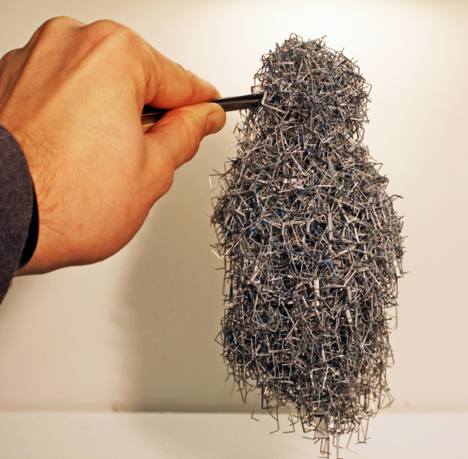
102 Cardwell Hall
A jumble of clothes hangers is a nightmare to untangle, as the individual hangers hook onto and become entangled with one another. Entanglement-driven cohesion is a general phenomenon, occurring in many different systems involving irregularly shaped particles. I'll present a variety of studies on "geometrically cohesive" granular materials (GCGM), defined by the ability to cohere due to the particle shape. These include long, thin rods, which can be surprisingly rigid, and U-shaped staples (pictured) that resist being pulled apart. The statistical theories that explain how these piles melt and disentangle are reassuringly simple and capture the fundamental mechanisms of entanglement and "weakest link" behaviors, which also share universal similarities with geologically relevant avalanche and earthquake dynamics. GCGMs have also been used to model the network behavior of fire ants (pictured), which form self-healing piles capable of supporting both compressional and extensional forces to migrate across rivers. The talk will conclude with recent work on the influence container boundaries have on rod packings and dimerization of c-shaped Annular Sector Particles (pictured) under 2d shear.
